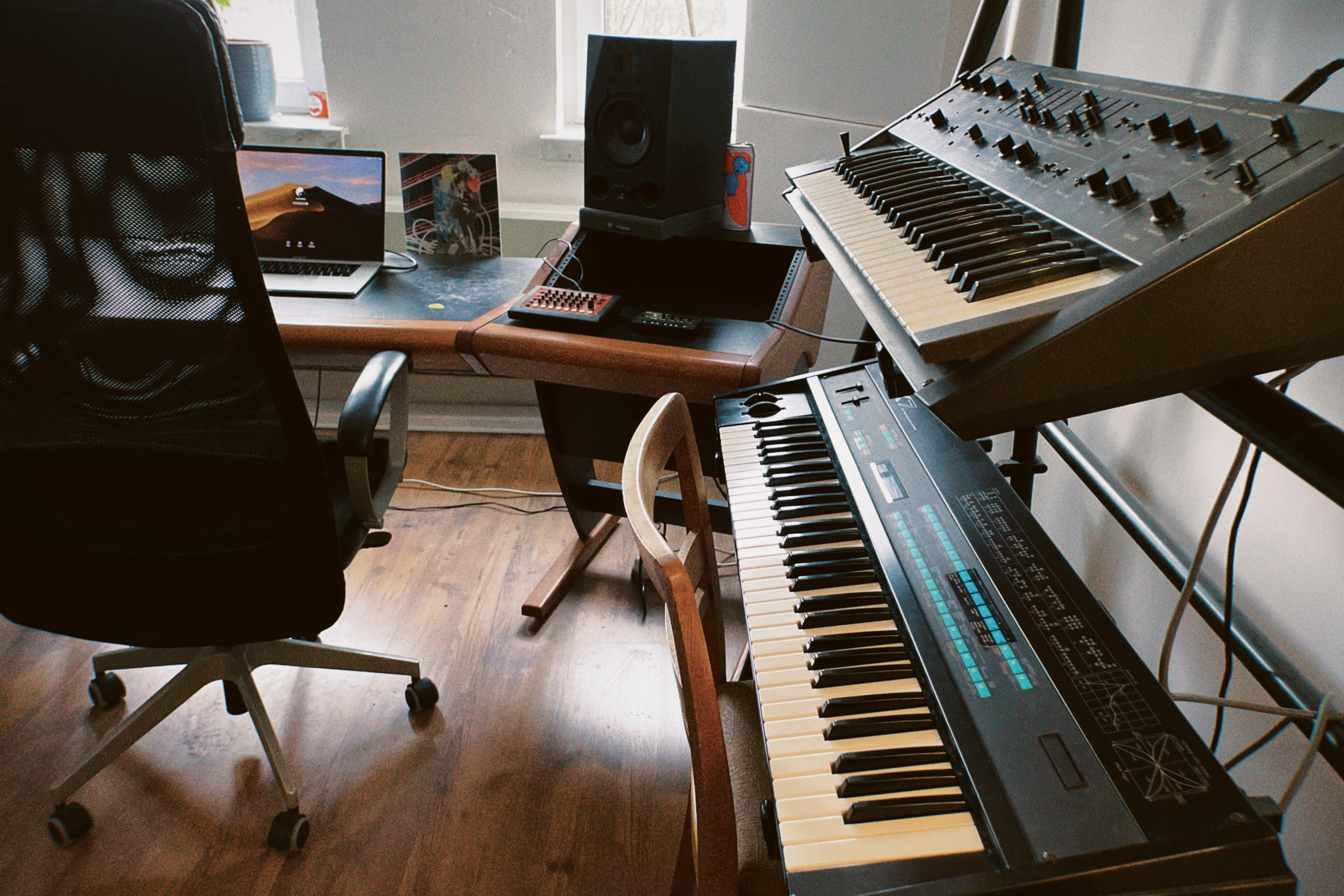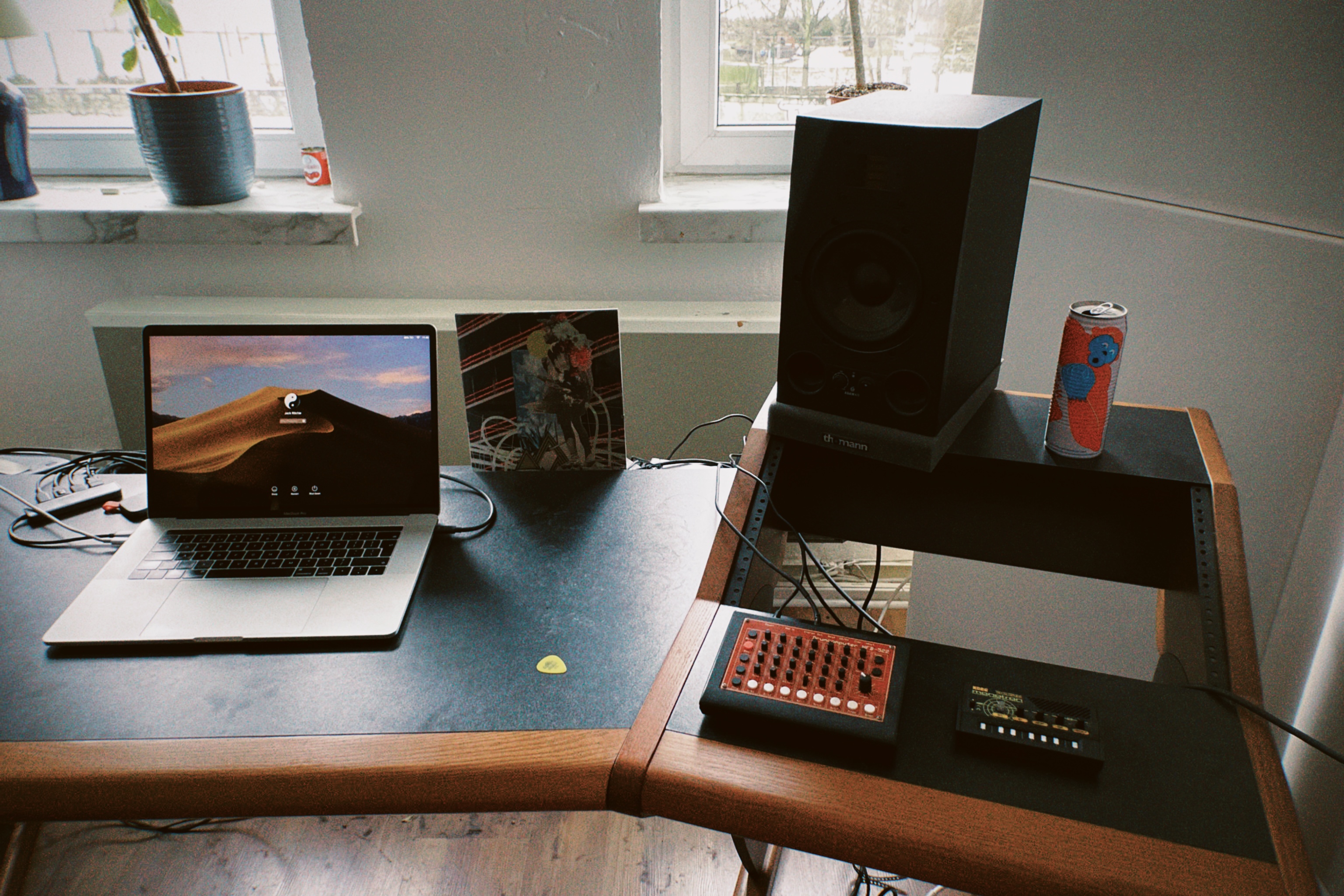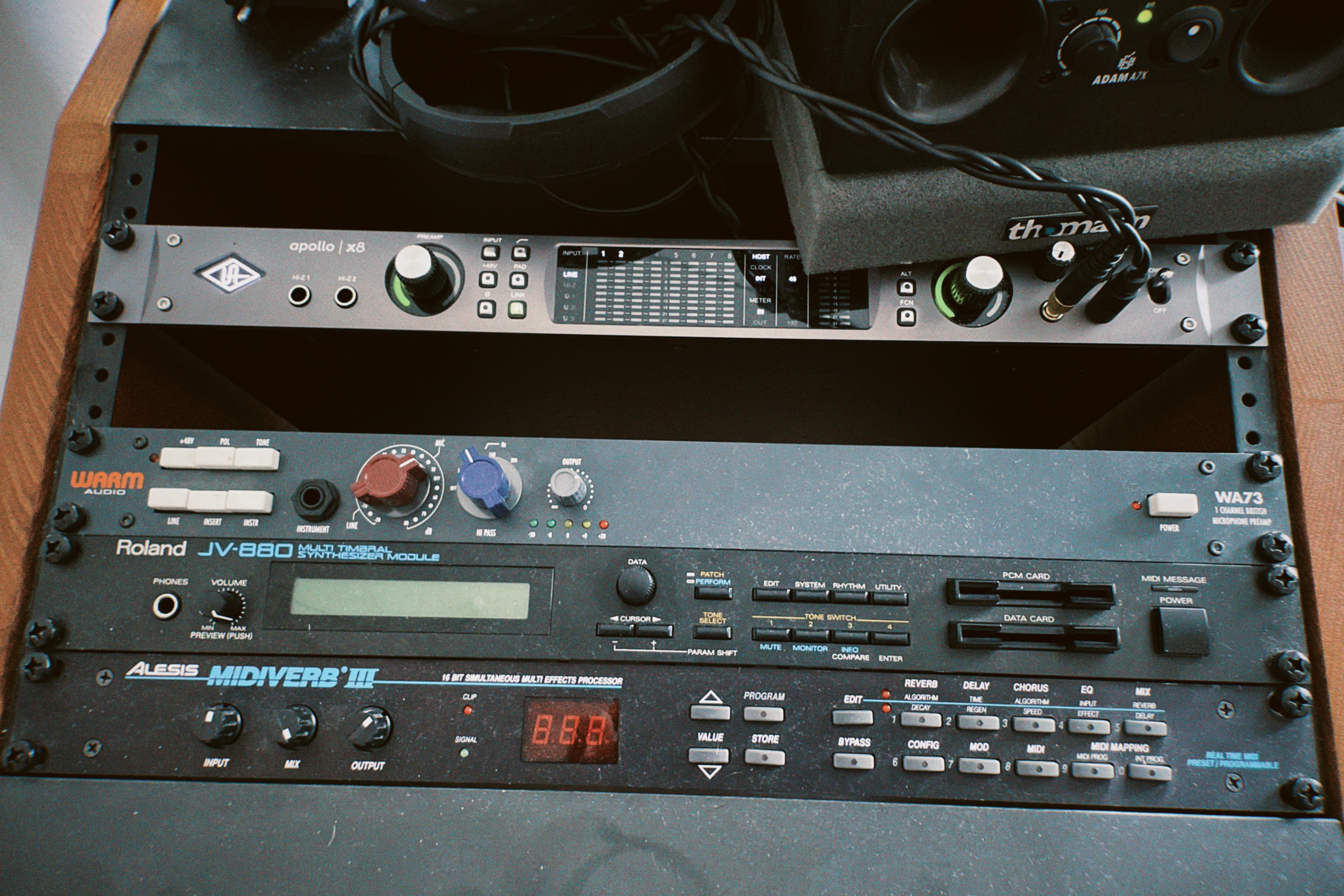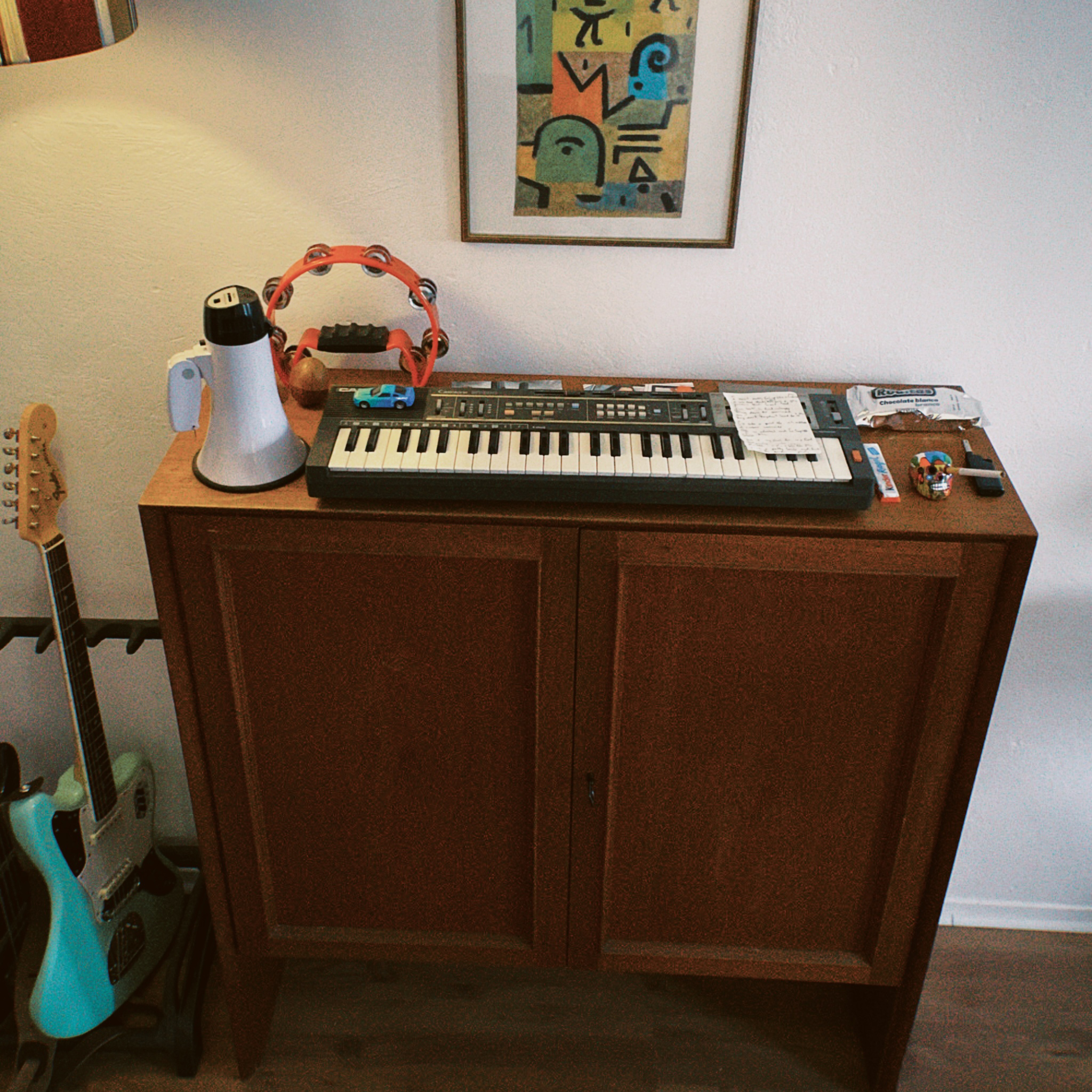Bearcubs: "Your musical ideas aren’t precious creatures. It’s OK to completely mangle and destroy a sound"
Jack Ritchie tells us about the analogue synths, effects plugins and production techniques that inspired the production of his latest EP, Watching People Playing Tennis Out The Window

Working under the name Bearcubs, Jack Ritchie records diaristic electronica, blending crisp breakbeats and celestial synths with introspective vocals that lift poignance from the mundanities of everyday existence.
Ritchie is one of a number of contemporary artists mining the UK’s rich musical history for nostalgic touchstones; breaks, stabs and wavering synth pads that recall ‘90s rave and UK garage. What sets his music apart, though, is the way he pairs these hallmarks with modern production techniques and a personal perspective exposed through his observational lyricism.
We caught up with Ritchie to find out more about the analogue synths, effects plugins and production techniques that inspired the production of his latest EP, Watching People Playing Tennis Out The Window.
When did you start making music, and how did you first get started?
“I’ve been fascinated with making sounds for as long as I can remember. There used to be a lot of instruments and bits of percussion and also an old tape recorder lying around in my parents house, so I would hit random objects and record them. I think the first ‘production’ I ever made was with one of my childhood friends, using a software called Cakewalk, which could only have four tracks of MIDI and one audio track [laughs].
“We made a very basic garage tune using a shitty old drum machine and a webcam mic. From then on I learnt a bit of guitar and piano and started playing in various bands from funk to hardcore punk bands. Although I had heard a lot of dance and electronic music growing up, I didn’t really get into or appreciate it until I met like-minded people at university in Brighton. That kinda opened up that world for me and that was basically the origin of the Bearcubs project.”

Tell us about your studio/set-up.
Want all the hottest music and gear news, reviews, deals, features and more, direct to your inbox? Sign up here.
“I moved to Berlin about five years ago and for the last three years I’ve been lucky enough to have a studio in an industrial area in the city centre. For me, being able to create music with the bare minimum enhances my creativity, because I have to work within the boundaries of what I have at my disposal.
“At the moment I’ve got a Prophet Rev 2 Synthesiser which is very versatile for all kind of sounds and FX, a Moog Grandmother which I use on almost every song for bass and lead sounds, and a Yamaha DX7 which I use a lot for pads and I think is a very underrated synth with a very warm sound if you can program it a bit.
I try to record mainly as audio because I like to capture performances, as opposed to recording data that can be tweaked later
“Also I have a Korg Delta which is great for simple analogue-sounding waveforms, and lastly a Roland JV-880 which gives me very ‘90s sounds. I try to record mainly as audio because I like to capture performances as opposed to recording data that can be tweaked later. Some of the best bits of my sounds I feel came from when I started messing around at the end of a take and then playful and unexpected things happened that I could never have planned.
“I have a few other bits lying around, like a four-track tape recorder I sometimes use for tape loops, a toy Casio keyboard and an MFB-522 drum machine. Although buying gear is always fun, having this specific set of instruments that I use on every song is a big part of my sound and creates a sort of continuity between tracks.”

What DAW (or DAWs) do you use, and why did you choose it?
“I use Ableton now. I tried most of the main DAWs (Cubase, Reason and Logic) and a few years back something with Ableton just clicked with me. It felt so playful and quick to use. I do a lot of messing around with audio, pitching stuff up and down, chopping it and throwing it in a sampler, bouncing to audio again, etcetera.
“Ableton is perfect for this because it’s so fast with audio, with Logic I always had to wait for stuff to process. At the end of the day I’m just going to use whatever speeds up my workflow. Whatever DAW you use, it doesn’t really matter, the goal is just to make music you find beautiful and to not get tired in the process.”
What one piece of gear in your studio could you not do without, and why?
“It’s got to be my Yamaha DX7 synthesiser, I spent a lot of time scouring the dusty corners of the internet looking for preset patches in weird databases for it. Most people know it for the classic presets which sound very ‘80s but once you have the right patches on it you can create very warm, soulful and futuristic sounds.
“When I compare it to the VST version it just isn’t the same, there’s a kind of hiss there and a slight unpredictability that makes it feel like there’s a ghost inside or something. It’s been a big part of my most recent EP.”

What's the latest addition to your studio?
“With the synths I have in my studio I have basically every decade covered, so the last missing piece I needed was an analogue synth from the ‘70s. I recently picked up a Korg Delta which is quite a rare and underappreciated synth. I found out about it through Mount Kimbie as it features on a lot of their stuff. It’s a bit strange how it works and the polyphony means there are glitches in the sound sometimes which adds a lot of character. The raw waveforms sound very nice to me.
I picked up a super cheap little thing off eBay recently called a Yamaha QY-70, it looks like a Game Boy with a keyboard but it’s surprisingly powerful
“I also picked up a super cheap little thing off eBay recently called a Yamaha QY-70, it looks like a Game Boy with a keyboard but it’s surprisingly powerful and has all kinds of sounds, drum kits and effects within, like a mini portable music-maker. Bjork used it to make demo sketches for her Homogenic album, my plan is to make a whole album using only that, as a way to get away from computers and DAWs.”
What dream bit of gear would you love to have in your studio?
“I would love to own a Juno-60, they are quite expensive now but one of the most musical and full-sounding analogue synths I have ever heard. A Studer reel-to-reel would also be very nice to have to saturate drums with and to bounce mixes to, I don’t know why but there’s something so satisfying about running stuff through tape and then messing with the pitch.”

When approaching a new track or project, where do you start?
“I usually start by finding a chord progression, I’m sort of thinking in my head about melodies at the same time and humming along. Once I come across something that I think has potential, I record it and start adding drums and bass.
“Lately I’ve been actively including vocals early on in the process, so that I don’t overproduce something and leave no space further down the road. Even if it’s just scratch nonsense vocals, as long as there is a sense of melody that gels with the other elements then I know the idea has potential to become a full song.”
Tell us about some of your favourite plugins and how you use them?
“My most-used plugin is probably EchoBoy by Soundtoys. I use it all the time as a regular delay, but I also use it as a sort of EQ distortion by putting it 100% wet on a track, turning the Echo Time to zero and changing the style modes to get different sounds.
“Another favourite is Decimort by D16. I love to degrade sounds to add edge and character. Something I’ve realised is that having less information in a sound (by making it more lo-fi) helps create space in a track, so different elements can create more depth. I often combine this with a tape cassette plugin to really mess stuff up.”

There are some really interesting samples on the new EP. Tell us about a few of those and what inspired them?
“Sines, the first song on the EP was inspired by Caroline Polachek’s side project CEP, where she made a whole album only using sine waves. I wanted to see if I could use this idea as a template, so all the melodic sounds I used were sine waves which I degraded using bitcrushers. I used Lossy by Goodhertz which creates an mp3-like quality, which reminded me of an old internet modem or dial tones on a landline phone.
Recently I’ve been throwing breaks into the Simpler in Ableton and playing them in with a MIDI keyboard
“The main sample in Comes Back Around was made by chopping up a tape loop and adding a beat repeat effect to it, which gives it a glitchy sound, kinda like a computer is trying to figure something out. On Yeah (Never Know), the main vocal sample started out as a completely different song which had a sort of Lana Del Rey vibe to it. I made it with Foudeqush when I was visiting Mexico City at the start of the year.
“Later when I got home, I ended up taking her vocal, pitching and chopping it, adding some modulation and a gate effect to get this euphoric ethereal sound. It reminds me a bit of some trancey sounds from the late ‘90s and early ‘00s.”
We love the way you’ve worked with breaks on the new EP. Do you have any go-to techniques for processing and manipulating breakbeats?
“Recently I’ve been throwing breaks into the Simpler in Ableton and playing them in with a MIDI keyboard, that way I can discover different possibilities and add a little more human feel to them. I also like to use the Ableton Warp modes, for example using the Beat Warp mode and turning down the transient so you get a very tight and attack-y-sounding break, then I’ll often layer a few together to create more interesting rhythms and textures.”
Watching People Playing Tennis Out The Window is out now via LG015.

Bearcubs' production tips
1. Aim for contrast in your productions
“It’s important to have contrast in your productions to bring the most out of the sound. For example, a really reverb-y sound against a very dry sound will increase the effect of both. Stereo things only sound stereo when in contrast with mono elements, and lowpass filtered sounds are duller when compared with bright sounds and vice versa.
“I like to place certain objects in a reverb or delay space and then have others happening simultaneously that are completely dry, instead of putting everything in the same space.”
2. Don't be afraid to fuck shit up
“By this I mean that your musical ideas aren’t precious creatures. It’s okay to completely mangle and destroy a sound - it might lead to something new and unexpected. It’s also okay to cut two songs in half and stick them together, if it feels right to you then it is right.
“I will often make a bounce of a song and then pitch it up or down drastically or put it in a sampler and use it as if I’m sampling myself. This has helped me use up a lot of ideas on my computer which I felt had something special but I could somehow never work into a full song.”
3. Off-pitch is your friend
“Any sort of movement in a sound makes it more interesting, for me especially when the pitch is subtly changing, like a slow vibrato on a violin or an old tape recording where the motor isn’t quite accurate. It creates these fluctuations which bring a sound alive.
“When you are using digital synths and VSTs things can often get a bit sterile, especially when everything is heavily quantised. To get around this I will often play in sounds while riding the pitch wheel slightly with my left hand to bring the sound alive a bit. Sometimes with a lead I might even pitch it up by almost half a semitone so that it creates a chorusing effect with the chords underneath and makes everything sound less perfect.”



I'm MusicRadar's Tech Editor, working across everything from product news and gear-focused features to artist interviews and tech tutorials. I love electronic music and I'm perpetually fascinated by the tools we use to make it.